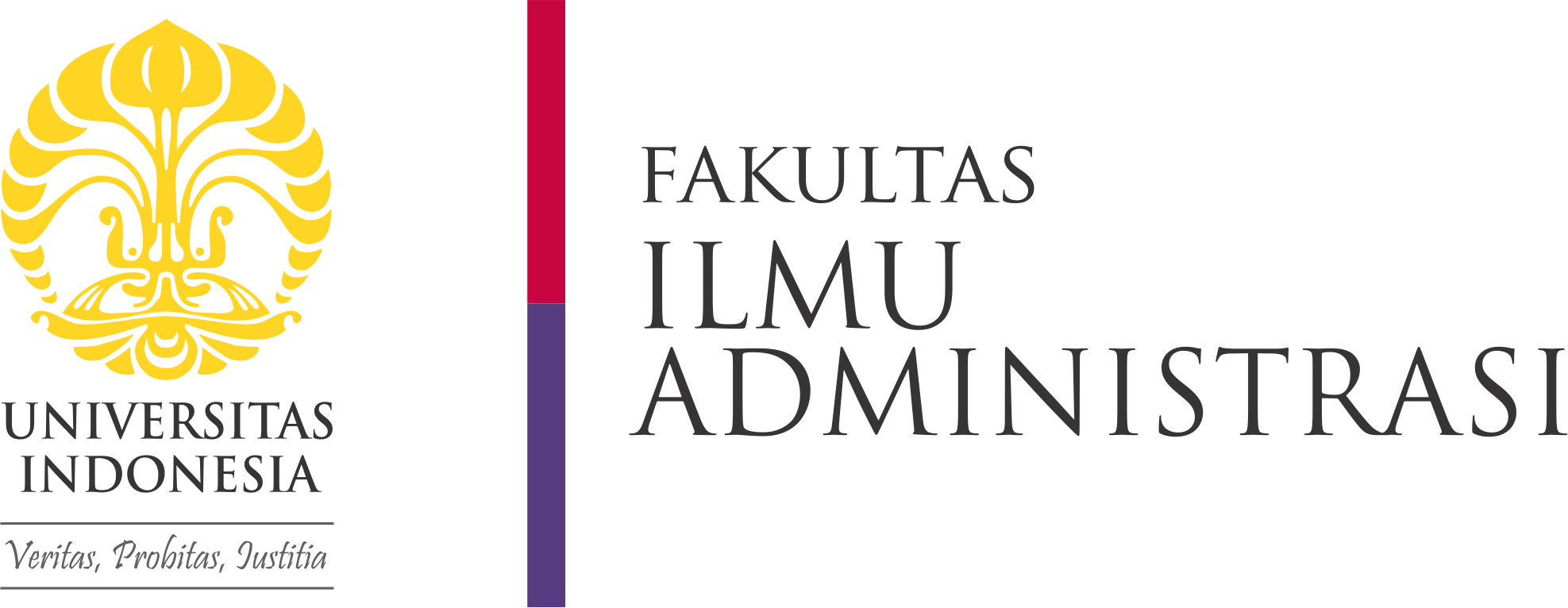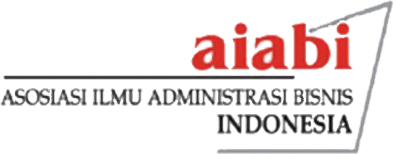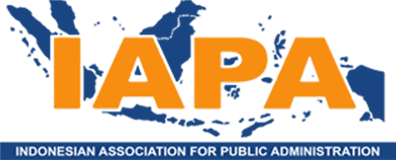Creative Commons License

This work is licensed under a Creative Commons Attribution-Share Alike 4.0 International License.
Abstract
Talent management has been widely discussed since the introduction of The War for Talent. This study aims to analyze factors that influence the successful implementation of talent management in the Ministry of Finance and analyze employee perceptions and priorities for talent management development. The population in this study included 80,996 employees of the Ministry of Finance, with a total sample of 408 people. The research employed a descriptive approach and Importance Performance Analysis (IPA). The results indicate that organizations need to motivate and facilitate employees to adapt to organizational developments, provide equal opportunities for growth for all employees, develop the competence of the HR Department to handle talent management challenges and provide a comprehensive repository of talent management information. Meanwhile, the performance indicator that needs to be improved is providing equal opportunities for development for all employees.
References
Abdillah, W., & Jogiyanto, H. (2015). Partial Least Square (PLS): Alternatif SEM dalam Penelitian Bisnis. CV Andi Offset.
Agustini, N. A., & Purnaningsih, N. (2018). Pengaruh komunikasi internal dalam membangun budaya organisasi. Jurnal Komunikasi Pembangunan, 16(1), 89-108.
Ahmad Saomin Ali, A. H. (2019). Konsep dan Tantangan dalam Implementasi Talent Management di Perusahaan Multinasional: Studi Kasus PT Unilver Indonesia Tbk. Jurnal Manajemen Teori dan Terapan, 12(1), 1-17.
Ali, A. S. (2019). Implementasi talent management di PT. Unilever Indonesia Tbk. Institut Pertanian Bogor.
Anggelina, J., & Japarianto, E. (2014). Analisis pengaruh sikap, subjective norm dan perceived behavioral control terhadap purchase intention pelanggan SOGO Departement Store di Tunjungan Plaza Surabaya. Jurnal Strategi Pemasaran, 1, 1-7.
Aprinto, B., Kuswanda, H., & Chosasih, C. (2016). Buku Praktisi SDM Mewujudkan Konsep Human Capital: Revolusi Human Capital. PPM Manajemen.
Argenti, P. (2013). Corporate Communication. Singapore: McGraw-Hill International Edition. Berger,
L. A., & Berger, D. R. (2008). The Handbook of Best Practices on Talent Management. PT Permata Printing.
Collings, D. (2014). Integrating global mobility and global talent management: exploring the challenges and strategic opportunities. Journal of World Business, 49(2), 253-261.
Cooke, F., Saini, D., & Wang, J. (2014). Talent management in China and India: a comparison of management perceptions and human resource practices. Journal of World Business, 49(2), 225-235.
Eksaura Syifana Putri, M. E. (2020, Juni 5). Manajemen Talenta, Jurus Jitu Mewujudkan ASN Berkualitas. Jakarta, Indonesia: yoursay.id. Retrieved fromhttps://yoursay.suara.com/news/2020/06/05/135037/manajemen-talenta-jurus-jitu-mewujudkan-asn-berkualitas
Ellitan, L., & Anatan, L. (2020). Achieving business continuity in industrial 4.0 and society 5.0. International Journal of Trend in Scientific Research and Development, 4(2), 235-239.
Ford, J., Harding, N., & Stoyanova, D. (2010). Talent management and development an overview of current theory and practice [editorial]. Bradford Centre for Managerial Excellence.
Foteini Kravariti, K. J. (2019, July 17). Talent management: a critical literature review and research agenda for public sector human resource management. Public Management Review, 22(2), 1-21.doi:https://doi.org/10.1080/14719037.2019.1638439
Francis, T., & Hoefel, F. (2018). True Gen': Generation Z and its implications for companies [internet]. Global Editorial Services: McKinsey & Company. Retrieved from https://www.mckinsey.com/industries/consumer-packaged-goods/our-insights/true-gen-generation-z-and-its-implications-for-companies#:~:text=Such%20behaviors%20influence%20the%20way,a%20matter%20of%20ethical%20concern.
Ghomi, H., & Ahmadi, H. (2018). Assessment of student’s talent management in a corporate university . Management Science Letters, 8(12), 1375-1386.
Ghozali, I. (2005). Aplikasi Analisis Multivariate dengan Program SPSS, (3rd ed). Semarang: Badan Penerbit Universitas Diponegoro.
Hair, R., & Joseph, F. J. (2010). Multivariate Data Analysis (7th ed). Pearson Education Limited.
Hendrasto, N., Dharmawan, A. H., Sumardjo, & Baga, L. M. (2019). Leadership Theory in Digital Era: A Preliminary Investigation to Leadership in the Digital Startup. BISNIS & BIROKRASI: Jurnal Ilmu Administrasi dan Organisasi, 26(2), 68-76.
Kadarisman, M. (2012). Analysis on factors that influence job satisfaction of government employees. BISNIS & BIROKRASI: Jurnal Ilmu Administrasi dan Organisasi, 19(1), 55-68.
Krissetyanti, E. P. (2013). Penerapan Strategi Mnajamenen Talenta dalam Pengembangan PNS. Jurnal Kebijakan dan Manajemen PNS, 7(1), 1-15.
Lane, T., & Dirk, S. (2017). Industry 4.0: An Overview of Key Benefits, Technologies, and Challenges in Cybersecurity for Industry 4.0: Analysis for Design and Manufacturing. Springer Publishing, Springer Series in Advanced Manufacturing, 1-33.
Latu, T., & Everett, A. (2000). Review of Satisfaction Research and Measurement Approaches. Wellington: Departement of Conservation.
Lind, A., Marchal, W., & Wathen, S. (2013). Statistical Technique in Business and Economics, (15th ed). McGraw-Hill.
Manopo, C. (2011). Competency-Based Talent and Performance Management System. Salemba Empat.
Meyers, M., & Woerkom, M. v. (2014). The influence of underlying philosophies on talent management: theory, implications for practice, and research agenda. Journal of World Business, 49(2), 192-203.
Mudzakir. (2020, Mei 20). Smart ASN menguasai era digital. Retrieved Agustus 3, 2020, from https://www.menpan.go.id/: https://www.menpan.go.id/site/berita-terkini/smart-asn-menguasai-era-digital. Ogungbeni, J. I., Obiamalu, A.
R., & Obiora, K. U. (2019). Open digital repositories: prospects of African countries within the global information space. Library Philosophy and Practice (e-journal), 2444 https://digitalcommons.unl.
Permana, N., Jalal, O., Martono, F., Harnoko, L., Bataona, J., & Achirina. (2011). Talent Management Implementation: Belajar dari Perusahaan-Perusahaan Terkemuka. PPM Manajemen.
Purnaningsih, N., & Agustini, N. A. (2018). Pengaruh komunikasi internal dalam membangun budaya organisasi. Jurnal Komunikasi Pembangunan, 16(1), 89-108.
Republik Indonesia, Ministry of Finance(Kemenkeu). (2016). Peraturan Menteri Keuangan Nomor 60/PMK.01/2016 Tentang Manajemen Talenta Kementerian Keuangan. Kementerian Keuangan.
Republik Indonesia, Ministry of Finance(Kemenkeu). (2017). Peraturan Menteri Keuangan Nomor 161/PMK.01/2017 Tentang Perubahan atas Peraturan Menteri Keuangan Nomor 60/PMK.01/2016 Tentang Manajemen Talenta Kementerian Keuangan. Kementerian Keuangan.
Republik Indonesia, Ministry of Finance(Kemenkeu). (2020). Statistik SDM Kementerian Keuangan. Kementerian Keuangan.
Republik Indonesia, Ministry of National Development Planning / National Development Planning Agency (Bappenas). (2019). Indonesia 2045: Berdaulat, Maju, Adil, dan Makmur. Kementerian PPN/Bappenas.
Sakapurnama, E., & Safitri, N. (2012). Good Governance Aspect in Implementation of The Transparency of Public Information Law. BISNIS & BIROKRASI: Jurnal Ilmu Administrasi dan Organisasi, 19(1), 69-78.
Santoso, S. (2010). Statistik Parametrik. Elex Media Komputindo. Schuler, R., SE, S. J., & Tarique, I. (2011). Global talent management and global talent challenges: strategic opportunities for IHRM. Journal of World Business, 46(4), 506-516.
Schwab, K. (2017). The Fourth Industrial Revolution. Crown Business.
Sekaran, U., & Bougie, R. (2013). Research Methods for Business (6th ed.). John Wiley & Sons Ltd.
Semiun, Y. (2007). Kesehatan Mental I (2nd ed.). Yogyakarta: Kanisius.
Stevani, M., & Santoso, T. G. (2014). Analisis pengaruh kemampuan komunikasi dan kemampuan beradaptasi terhadap kinerja karyawan di Celebrity Fitness Galaxy Mall. Jurnal Hospitality dan Manajemen Jasa, 2(1), 1-13.
Sugiyono. (2017). Statistika untuk Penelitian. Bandung: Alfabeta.
Sweet, K., Witt, L., & Shoss, M. (2015). The interactive effect of leader-member exchange and perceived organizational support on employee adaptive performance. Journal of Organizational Psychology, 15(1), 49-62.
Tafti, M. M., Mahmoudsalehi, M., & Amir, M. (2017). Critical success factors, challenges, and obstacles in talent management. Industrial and Commercial Training. 49(1), 15-21.
Trihendradi, C. (2011). Langkah-Langkah Mudah Melakukan Analisis Statistik Menggunakan SPSS 20. CV Andi Offset.
Recommended Citation
Rifai, Ahmad; Maarif, M. Syamsul; and Sukmawati, Anggraini
(2023)
"Factors Influencing the Successful Implementation of Talent Management in the Indonesian Ministry of Finance,"
BISNIS & BIROKRASI: Jurnal Ilmu Administrasi dan Organisasi: Vol. 30:
No.
1, Article 1.
DOI: 10.20476/jbb.v30i1.1300
Available at:
https://scholarhub.ui.ac.id/jbb/vol30/iss1/1
Included in
Organizational Behavior and Theory Commons, Performance Management Commons, Training and Development Commons






